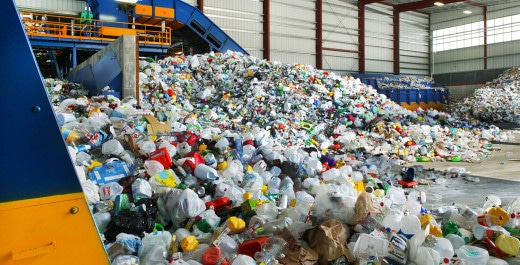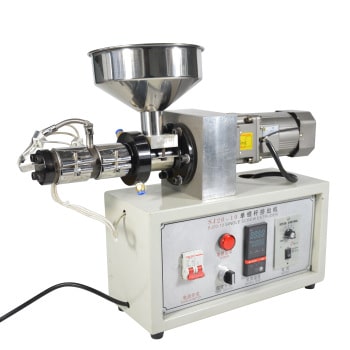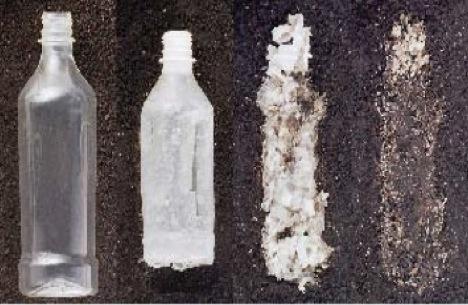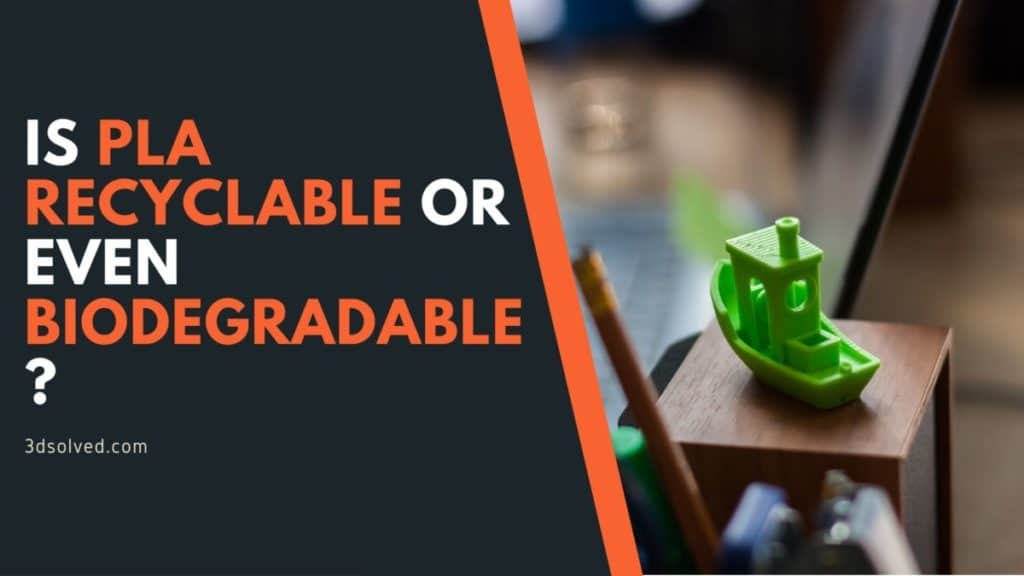If there’s one problem that 3d printing has it’s that it creates a lot of waste, even though it can be hard to know exactly how much it is.
In most cases, the leftover material as well as the prints that did not work out will be sent to a landfill where they will sit buried for thousands of years.
However, are PLA prints recyclable? Or can they even be biodegraded?
Let’s answer these questions right now, shall we?
Is PLA Recyclable?
Even though PLA is regarded as a recyclable plastic, and even biodegradable as well, it cannot be recycled with other types of plastic because of its lower melting temperature, since this will create problems at recycling centers.
The main two ways of recycling PLA are to hand it to a recycling plant that can handle it, or to grind it up and extrude it into new filament.
While this may sound as an extremely mundane and obvious answer, recycling PLA is not as simple as one would think.
Polylactic Acid Plastic (PLA) is a plant-derived product made typically from fermented plant starch (corn, sugarcane, and others), and therefore one would think that this makes it both biodegradable and also recyclable, right?
Well, half right; both statements are true but they require a more specialized process to do so, since you can’t simply throw your PLA into the plastics bin and expect it to get recycled.
Let’s take a closer look at how PLA gets recycled and what you should do with your PLA prints that turned out so ugly that you wanted to throw them out…
How to Recycle PLA?

PLA is a thermoplastic, which means that it melts once it reaches a certain temperature and becomes pliable, which essentially means that virtually any thermoplastic can be recycled.
The issue, however, arises during the sorting process at the recycling plant, because PLA is virtually indistinguishable from PET plastic and if they get recycled together it will reduce the overall strength and resale value of the recycled plastic.
So, what choices do you -the guy/gal who created too many failed prints- have?
Send it to a Material Recovery Facility
Material Recovery Facilities (MRF) work as an intermediate processing destination for potentially recyclable materials by sorting- and selling them to manufacturers for future productions.
You can contact your local MRF and ask them to take your PLA, and this way it won’t end up in a landfill.
A quick Google search for “Material Recovery Facility Near Me” should do the trick!
However, if you are a cheapskate like me, you may be amazed to know that there’s a way of recycling PLA yourself and making filament with it again…
Recycle PLA using a Filament Extruder

Remember what I said about thermoplastics and their ability of being melted down? Well, you can use all your failed parts, melt them down and re-extrude them without virtually losing any material.
This does come at a cost however, since you either have to purchase a filament extruder, like the Filastruder, or make one yourself, which I have to say is no simple task.
However, it’s worth noting that the filament extruder ends up paying for itself over time since you will cut down on how much you spend on filament dramatically.
Advantages of Recycling PLA
Aside from the obvious “save the planet” side of things, which is definitely the most important reason to recycle, there are some other clear advantages to recycling the prints that didn’t make the cut;
Save Money
Shredding and re-extruding undesired PLA will save you money in the long run. Sure, you’ll have to fork out the initial investment to get a filament extruder, but over time it’s very well worth it.
Just make sure to keep all the prints that will be recycled together and group them by filament type as to not accidentally mix them when making new filament.
More Color Options
Mixing differently colored prints-, melting them down and extruding the combined result can yield some interesting color combinations, especially if you know how to mix-and-match them to get the color you need.
Disadvantages of Recycling PLA
You thought recycling PLA was all sunshine and rainbows? Well, kind of, since there are more pros than cons, but here are a couple of disadvantages you might not have known about;
Higher Initial Cost
While getting a filament extruder and melting your prints down may be very cost-efficient over time, the initial investment might be a bit too high for many, especially if you only print every so often.
Lower Material Strenght
The process of re-extruding filament doesn’t come without its downsides, one of them being that the tensile strength of the filament might be reduced unless the process is done perfectly.
This means that warping will be more likely, not to mention overall print strength, etc.
My recommendation is to either get a good Filament Extruder, or to send your prints to a professional PLA recycler that knows what they’re doing.
In addition to recycling you may have also been trying to figure out whether or not PLA is biodegradable… After all, it’s a plant-based plastic, right? So, why wouldn’t it be?
Is PLA Biodegradable?

PLA is considered a non-biodegradable plastic since it can’t be naturally biodegraded in the biosphere since it requires specific conditions to be met, such as higher temperatures, specific chemical ratios, and others, which may only be recreated in industrial composting plants.
So, while it’s technically “compostable”, it’s non-biodegradable since it can’t degrade under traditional composting conditions.
Source: Biodegradable Plastics (Wikipedia).
Is composting PLA at home possible?
While it might seem appealing to you to toss that first- and maybe even terribly printed- Benchy into your backyard compost so that it may later serve as a nutrient source for your plants, it’s sadly not the case.
I just mentioned that PLA requires specific conditions to be met to be properly biodegraded, and one of those conditions is a temperature of around 65 degrees Celcius, among others, and how many home composters do you know that reach that temperature?
The truth of the matter is that the only way to biodegrade PLA is by sending it to an industrial composting plant.
So, what should you do; recycle it yourself or send it to a composting plant?
What is better for PLA; Compositing or Recycling?
Studies have shown that recycling PLA (and this also applies to any other plastic) has a 50 times lower environmental impact than composting and 16 times lower than combusting PLA, which is why 3D printer users that print with PLA should recycle it themselves.
Remember the point I made about purchasing a filament extruder? Well, not only will your wallet love you for it, but the environment as well since you will end up generating a lot less waste and saving money in the process.
Speaking of waste…
How to generate less waste?
We all know that 3d printing generates a lot of unnecessary waste and while it may be impossible to completely eliminate it, we can take a couple of precautions to minimize it as much as possible;
Double-check the printing settings
Stringing, over-or under extrusion, having the print not stick to the bed, warping, and many other issues may be due to poor printing settings, and all these badly printed parts will go to waste.
Making sure that all the settings are dialed in correctly can absolutely help in this regard.
Use fewer supports
Printing with supports results in a lot of wasted plastic and sometimes they may not be needed.
When possible, try not using supports or come up with creative ways of implementing them using less material.
Print using a brim instead of a raft
Rafts are used to ensure that your print sticks to the build surface of your printer, but they use quite a lot more material than brims, which is what I’d recommend you use instead, if possible.
Conclusion
As you can see, the “recycling” and “composting” questions aren’t as cut and dry as one would think.
In short, PLA can- and should be recycled by you, by either using it to make filament again or by sending it to the appropriate facilities that can properly recycle it, and it can also be composted but not in your back yard but rather at specific industrial composting plants.
Check out our recommended products section

We created a recommended products section that will allow you to remove the guesswork and reduce the time spent researching what printer, filament, or upgrades to get, since we know that this can be a very daunting task and which generally leads to a lot of confusion.
We have selected just a handful of 3D printers that we consider to be good for beginners as well as intermediates, and even experts, making the decision easier, and the filaments, as well as the upgrades listed, were all tested by us and carefully selected, so you know that whichever one you choose will work as intended.
Error processing API data.
